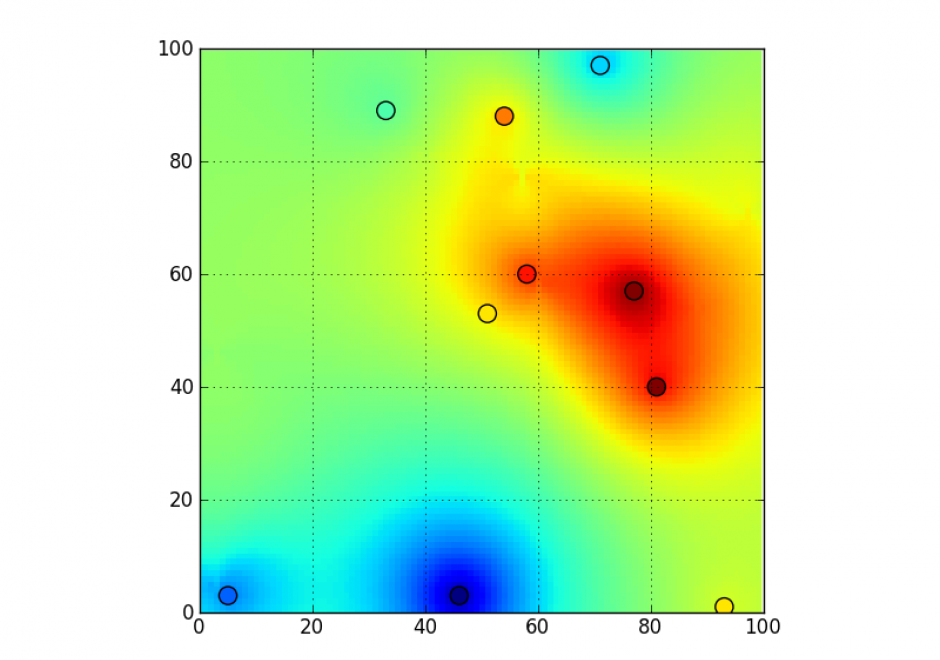AM-29 - Kriging Interpolation

Kriging is an interpolation method that makes predictions at unsampled locations using a linear combination of observations at nearby sampled locations. The influence of each observation on the kriging prediction is based on several factors: 1) its geographical proximity to the unsampled location, 2) the spatial arrangement of all observations (i.e., data configuration, such as clustering of observations in oversampled areas), and 3) the pattern of spatial correlation of the data. The development of kriging models is meaningful only when data are spatially correlated.. Kriging has several advantages over traditional interpolation techniques, such as inverse distance weighting or nearest neighbor: 1) it provides a measure of uncertainty attached to the results (i.e., kriging variance); 2) it accounts for direction-dependent relationships (i.e., spatial anisotropy); 3) weights are assigned to observations based on the spatial correlation of data instead of assumptions made by the analyst for IDW; 4) kriging predictions are not constrained to the range of observations used for interpolation, and 5) data measured over different spatial supports can be combined and change of support, such as downscaling or upscaling, can be conducted.

AM-08 - Kernels and Density Estimation
Kernel density estimation is an important nonparametric technique to estimate density from point-based or line-based data. It has been widely used for various purposes, such as point or line data smoothing, risk mapping, and hot spot detection. It applies a kernel function on each observation (point or line) and spreads the observation over the kernel window. The kernel density estimate at a location will be the sum of the fractions of all observations at that location. In a GIS environment, kernel density estimation usually results in a density surface where each cell is rendered based on the kernel density estimated at the cell center. The result of kernel density estimation could vary substantially depending on the choice of kernel function or kernel bandwidth, with the latter having a greater impact. When applying a fixed kernel bandwidth over all of the observations, undersmoothing of density may occur in areas with only sparse observation while oversmoothing may be found in other areas. To solve this issue, adaptive or variable bandwidth approaches have been suggested.